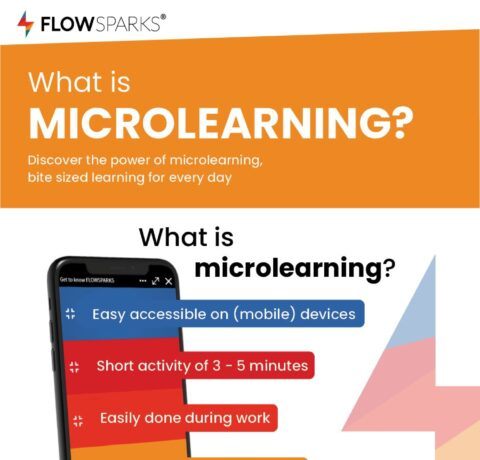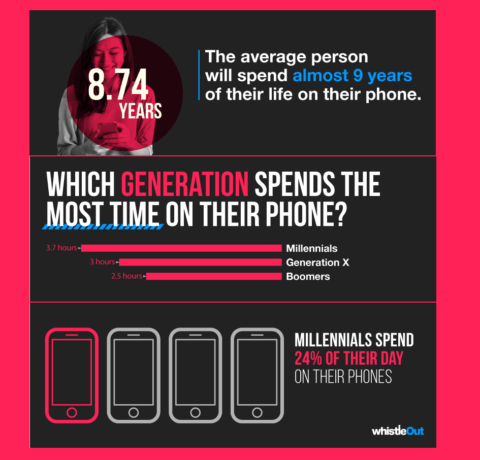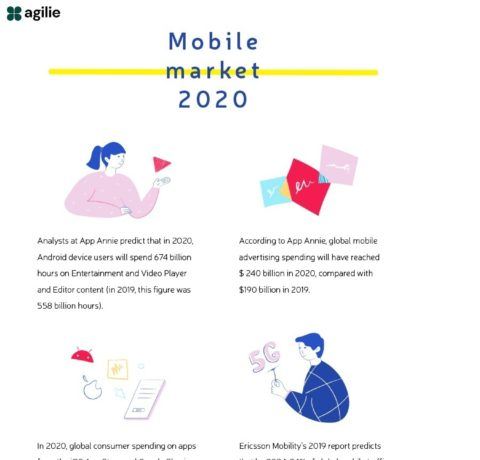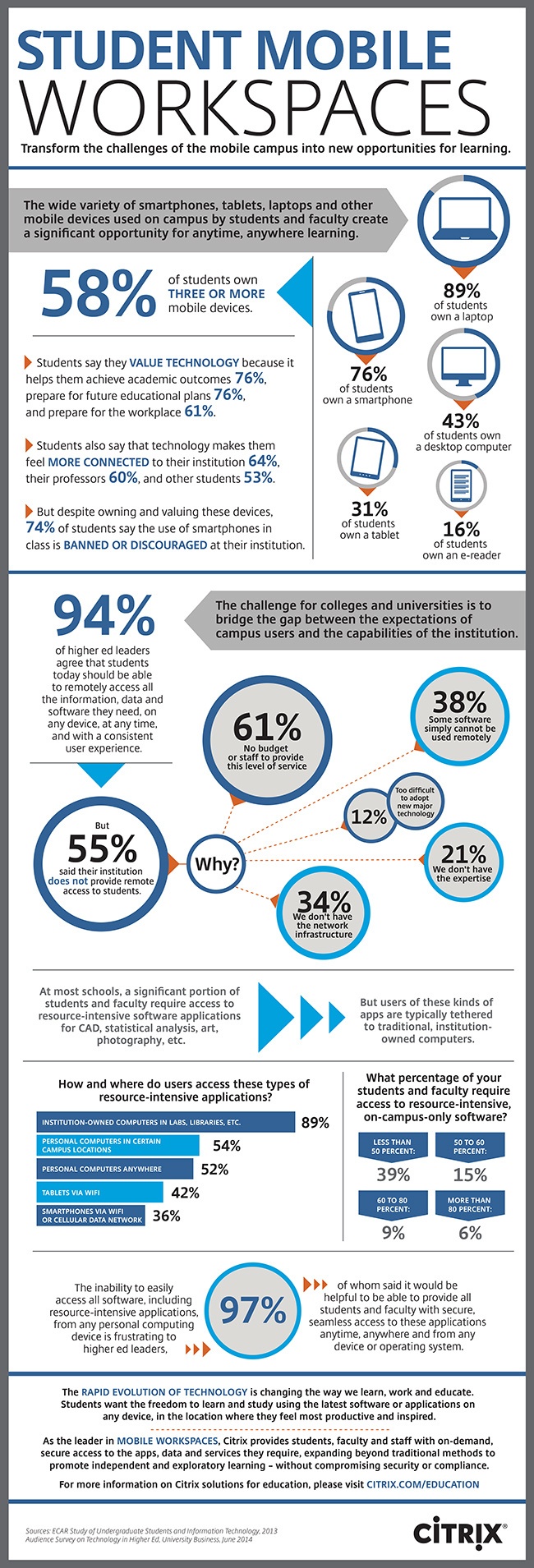Student Mobile Workspaces Infographic
Having a powerful mobile workspace has become a crucial component in higher education. The Student Mobile Workspaces Infographic gathers mobile device statistics from 2013–2014, showing how the challenges of the mobile campus can be transformed into new opportunities for learning!
The wide variety of smartphones, tablets, laptops and other mobile devices used on campus by students and faculty create a significant opportunity for anytime, anywhere learning.
- 58% of students own three or more mobile devices.
- 89% of students own a laptop
- 43% of students own a desktop computer
- 31% of students own a tablet
- 76% of students own a smartphone
- 16% of students own an e-reader
Students say they value technology because it helps them:
- achieve academic outcomes 76%,
- prepare for future educational plans 76%, and
- prepare for the workplace 61%.
Students also say that technology makes them feel more connected to:
- their institution 64%,
- their professors 60%, and
- other students 53%.
But despite owning and valuing these devices, 74% of students say the use of smartphones in class is banned or discouraged at their institution.
The challenge for colleges and universities is to bridge the gap between the expectations of campus users and the capabilities of the institution. 94% of higher ed leaders agree that students today should be able to remotely access all the information, data and software they need, on any device, at any time, and with a consistent user experience. But 55% said their institution 55% does not provide remote access to students.
Why?
- 61% no budget or staff to provide this level of service
- 38% some software simply cannot be used remotely
- 12% too difficult to adopt new major technology
- 34% we don't have the network infrastructure
- 21% we don't have the expertise
At most schools, a significant portion of students and faculty require access to resource-intensive software applications for cad, statistical analysis, art, photography, etc.
- Institution-owned computers in labs, libraries, etc. 89%
- Personal computers in certain campus locations 54%
- Personal computers anywhere 52%
- Tablets via wifi 42%
- Smartphones via wifi or cellular data network 36%
What percentage of your students and faculty require access to resource-intensive, on-campus-only software?
- less than 50 percent: 39%
- 50 to 60 percent: 15%
- 60 to 80 percent: 9%
- more than 80 percent: 6%
The inability to easily access all software, including resource-intensive applications, from any personal computing device is frustrating to higher ed leaders, 97% of whom said it would be helpful to be able to provide all students and faculty with secure, seamless access to these applications anytime, anywhere and from any device or operating system.
The rapid evolution of technology is changing the way we learn, work and educate. Students want the freedom to learn and study using the latest software or applications on any device, in the location where they feel most productive and inspired. As the leader in mobile workspaces, citrix provides students, faculty and staff with on-demand, secure access to the apps, data and services they require, expanding beyond traditional methods to promote independent and exploratory learning – without compromising security or compliance. For more information on citrix solutions for education, please visit citrix.com/education.







You can adjust your cookie preferences here.